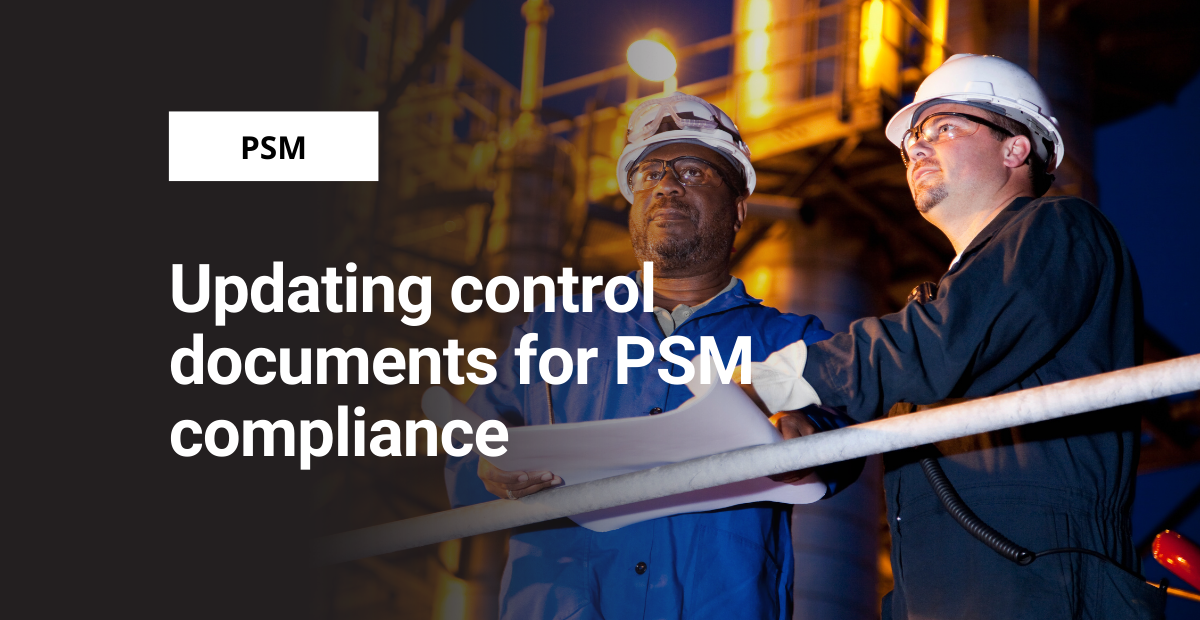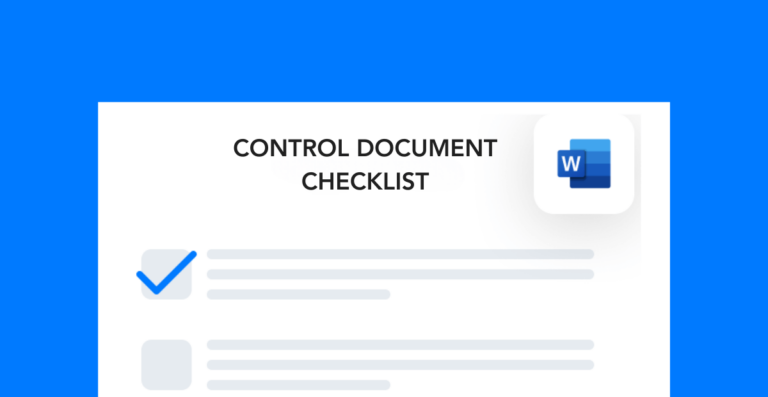One of the most important aspects of OSHA’s process safety management (PSM) standard is having comprehensive documentation of your entire program. Focusing on how your operational documents align with your PSM approach is important because it:
- Ensures that your policies and protocols are compliant with PSM requirements
- Forces you to continuously update and improve your site’s documentation
- Establishes a habit of auditing control documents
Whether you’re new to PSM compliance or a seasoned veteran, you’ll find that managing your site’s documents is easier when you have a system in place. And without a designated approach, you’ll be more likely to encounter chemical safety incidents and near misses along the way.
Frontline MOC for PSM documentation control
We built our management of change tool to accommodate all the information OSHA requires!
The domino effect of process change
PSM covers any changes to equipment, process, and personnel. But there are so many more variables to consider beyond those broad categories.
Think about it. Behind each of those variables lies countless action items and smaller areas of the operation that also require adjustment. And so PSM compliance creates a domino effect on many areas of the business—not just hazardous chemical management.
Control documents are one such area. For each change you make, you’ll need to review the benchmark documents that outline how your site handles PSM compliance. Even a small process modification may impact what your protocol is, so it’s important that you don’t overlook this area of compliance.
The importance of control documents
There are 14 elements of PSM, all of which require supporting documentation. These assets are typically referred to as “control documents.” That’s because they require very strict and methodical oversight. Making changes to high-stakes documents involves a stringent review process, often followed by multiple levels of approval.
Some examples of control documents for PSM include:
- Contingency plan
- Emergency response plan
- Site layout blueprint
- Quality assurance procedures
- PSM-related safety training materials
- Incident investigation protocols
Undoubtedly the hardest part is putting together these assets in the first place. But keeping them updated is still work, and it will require enough of your attention to warrant a dedicated strategy.
Overall OSHA compliance is much easier when you routinely update your PSM control documents—especially when you’ve recently completed an MOC. At the same time, it’s important to decide a manageable timeline for performing document audits.
Routine review of documents for PSM
To start, you’ll want to identify all the control documents you manage. The easiest way to do this is to go through each element of PSM and list out the supporting documentation. Then, categorize them according to priority level and overall impact on the operation. You might even organize them depending on how often they’re likely to need updating.
For example, your incident investigation approach might not change very often. But if you’re changing processes or equipment, you might have to make frequent updates to your site’s layout blueprints.
Once you have a master list of your control documents, you can schedule routine reviews for each of them. If you use action tracking software, you can easily assign those reviews as tasks for members of your team.
At the very minimum, you should be reviewing your control documents annually. In reality, though, you’ll probably have to complete a few major updates throughout the year.
To help you keep track of your site’s PSM documentation, we’ve created a control document checklist:
Then, when you complete a PSM project or new MOC, you can use it to review your documents and ensure that they remain relevant to your current systems.
Other posts you might like…
No posts

